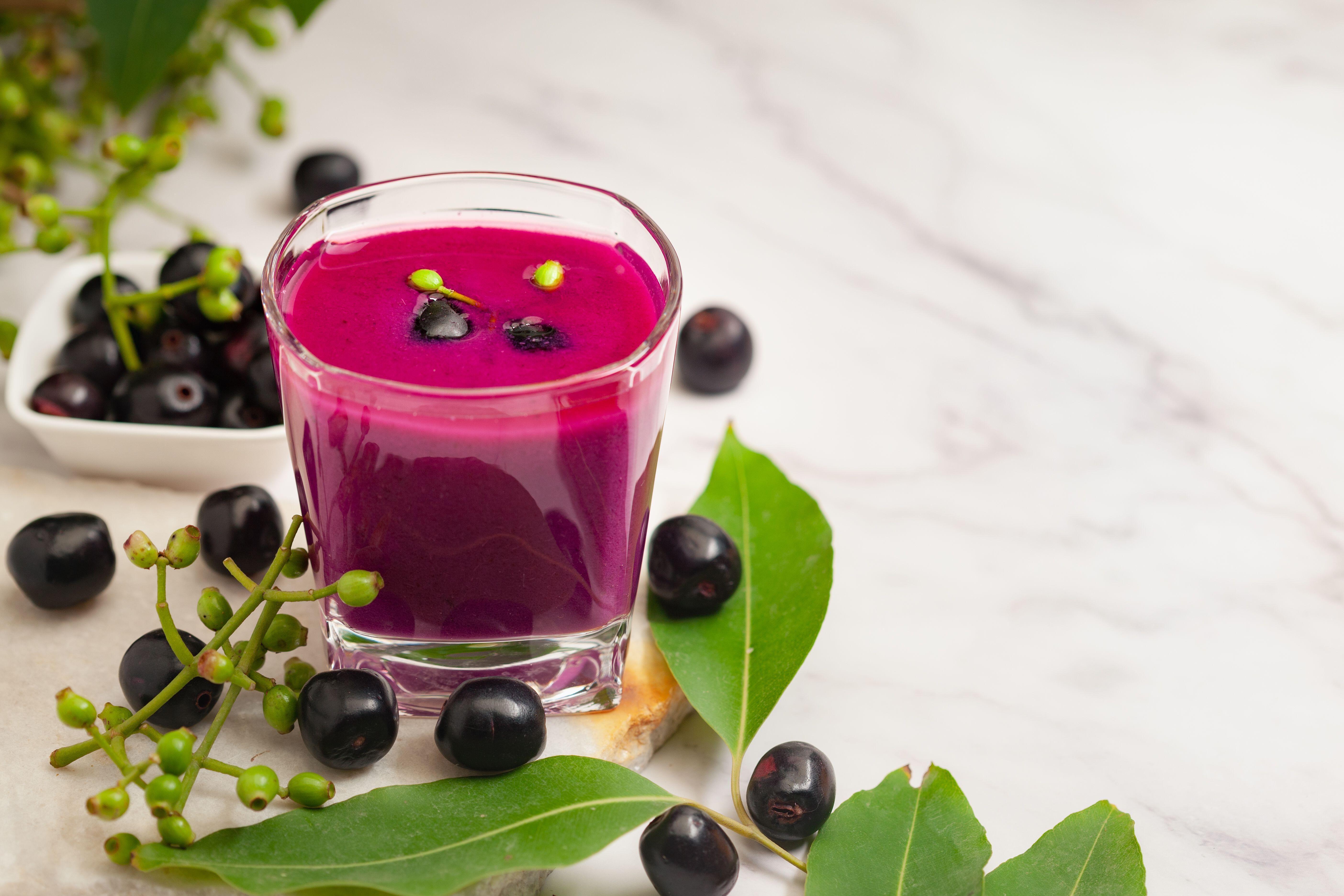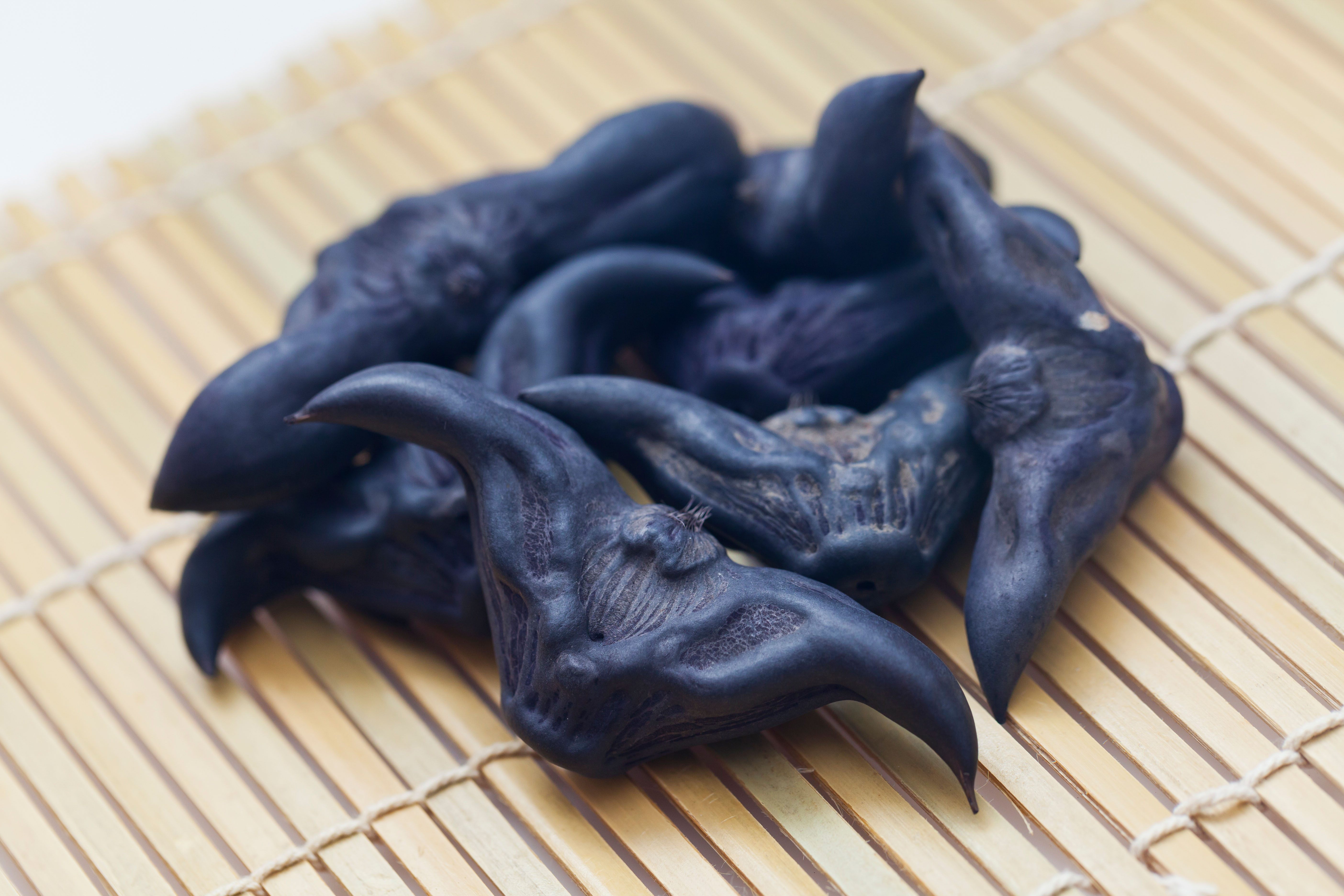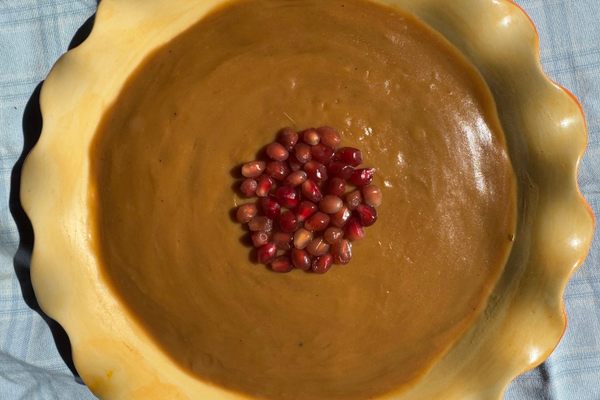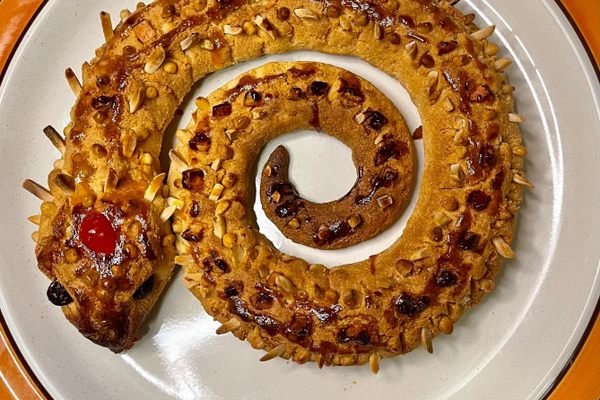‘Diwalloween’ Means Lights, Sweets, and Spooky Treats
How do you celebrate two feasts in one?
This article is adapted from the October 26, 2024, edition of Gastro Obscura’s Favorite Things newsletter. You can sign up here.
Throughout my 20s, I hosted an annual birthday costume party with a different theme each year. The theme for my 21st was, of course, alcohol: I glued crystals to my face and went as Bombay Sapphire. But as my interest in food grew over time, the focus of my parties shifted from the costumes to the menu, and I stopped limiting myself to just my birthday. Last year, I prepared a Halloween brunch buffet that included toad-shaped steamed buns, a severed charcuterie arm, and green mac and cheese served in a smoking bin of toxic waste. My boyfriend, Peyam, is Persian, so this spring we celebrated Nowruz, the Persian New Year, with a homemade banquet.
Our friends, Kylie and Madhav, are just as obsessed with food as we are. They celebrate Diwali, or Deepavali, the Hindu Festival of Lights. In 2024, both the main celebration day of Diwali and Kali Puja, the festival of the Hindu goddess Kali, fall on October 31. So when Kylie and Madhav suggested to Peyam and I that all four of us co-host a joint Halloween/Diwali celebration, I could not have been more excited.
The Theme
In some ways, Halloween and Diwali are opposites. Diwali celebrates the triumph of light over the forces of darkness, while Halloween celebrates the thrill of all that is dark and scary. But despite their different atmospheres and origins, both festivals prominently feature bright colors, burning lanterns, and sweets, and both bring together people of different faiths in celebration.
We set out to design a menu that respects and acknowledges both holidays. It’s going to be a dessert-heavy South Asian feast fit for the joyous atmosphere of Diwali, but with just a shiver of Halloween spookiness (and costumes, of course). We have dubbed this celebration “Diwalloween.”
The Menu

Planning a themed menu is all about balance. You want everything to taste good and go together, but also to fit the concept, especially visually. We decided to focus on Indian dishes with vibrant Halloween colors like orange, black, purple, and red. I opted not to use artificial food coloring, and tried to choose recipes that let the natural colors of ingredients shine. I also looked for opportunities to showcase ingredients native to South Asia that might serve my spooky purposes.
One that came to mind was jamun, a small purple fruit that tastes similar to sweet pomegranate. (The Indian dessert gulab jamun, which means “rosewater jamun,” was named for this fruit, because it’s made with syrup-soaked balls of similar size and shape.)
Last summer I made the Indian snack pani puri with jamun for a picnic. In this twist on a classic, the crispy potato-filled puri shells are dipped into a liquid blend of jamun, herbs, and spices. I decided to make this recipe again for Diwalloween, not only because it was a delicious combination of savory and sweet, but because the jamun turns the green sauce an eerie purple.

Another ingredient I knew needed to be on the menu was water caltrops, an Asian water chestnut that looks like it was designed by H. R. Giger. “Caltrops” refers to the spikes that were once scattered on battlefields to slow down enemy horses, but the outlandish nut is also said to resemble a bat, a devious mustache, a water buffalo’s head, or even a samosa (in Bengali, samosas are called shingara, meaning “water caltrops,” for their triangular shape).
Water caltrops are not always easy to source, but can be found at some Asian grocery stories in late summer and fall. Beneath their black shell is a dense white flesh with an earthy, potatoey flavor, which in South Asia is processed into flour; some Hindus cook with water caltrops flour during religious fasts that prohibit eating grains. For Diwalloween I will be boiling the nuts in salted water and serving them whole, a simpler preparation that preserves their spiky appearance.
Diwalloween Sweets

Sweets are an essential component of any Diwali menu, fitting the happy atmosphere that characterizes the festival. These include broad categories of confections like mithai, which are generally portioned into bite-sized pieces, and halwa, which has a soft, fudgy consistency and may be spooned or cut into squares. Given the party’s theme, it was a no-brainer to prepare gajar ka halwa, made from cardamom-laced carrots cooked in sweet milk. Not only is it perfect for fall, it’s perhaps the most orange of all traditional Indian desserts. Many other types of halwa are equally colorful, so I’m thinking of contrasting my carrot halwa with a dark jamun or beet version, or golden haldi halwa made with fresh grated turmeric root.
Then, there are the nontraditional options. Several years ago, I made autumn-themed mithai that I realized would be especially perfect for Diwalloween: little pumpkins sculpted from fruit puree and milk powder, with a segment of Pocky for the stems. Typically shaped into balls, the recipe I followed refers to this kind of sweet by its Gujarati name (penda), but in other Indian languages they’re called peda or pera.

Kylie will also be contributing a more traditional mithai (diamond-shaped orange mango katli) and a less traditional one (round purple laddu made with ube and coconut). We’re thinking of adding macabre details to some of these sweets, like sugar eyeballs.
The rest of our planned menu is just as colorful. We’ll have rice colored black with squid ink, and a potato dish from Northeast India that’s already black, due to a sauce made with black sesame seeds. There will be cubes of paneer cheese in a creamy orange pumpkin sauce, punch made with Midori liqueur and mango nectar as a witch’s potion, and blood-red cranberry chutney to drip gruesomely over it all. We’ll decorate with both pumpkins and lanterns, rangoli (geometric sand art), and creepy snake tablecloths.
Among the four of us planning the party and our guests, some of us grew up celebrating Diwali, others Halloween. We’re excited to host a fusion holiday that brings together what we love most about both, through our favorite part of any celebration: the food.
Gastro Obscura covers the world’s most wondrous food and drink.
Sign up for our regular newsletter.



























Follow us on Twitter to get the latest on the world's hidden wonders.
Like us on Facebook to get the latest on the world's hidden wonders.
Follow us on Twitter Like us on Facebook